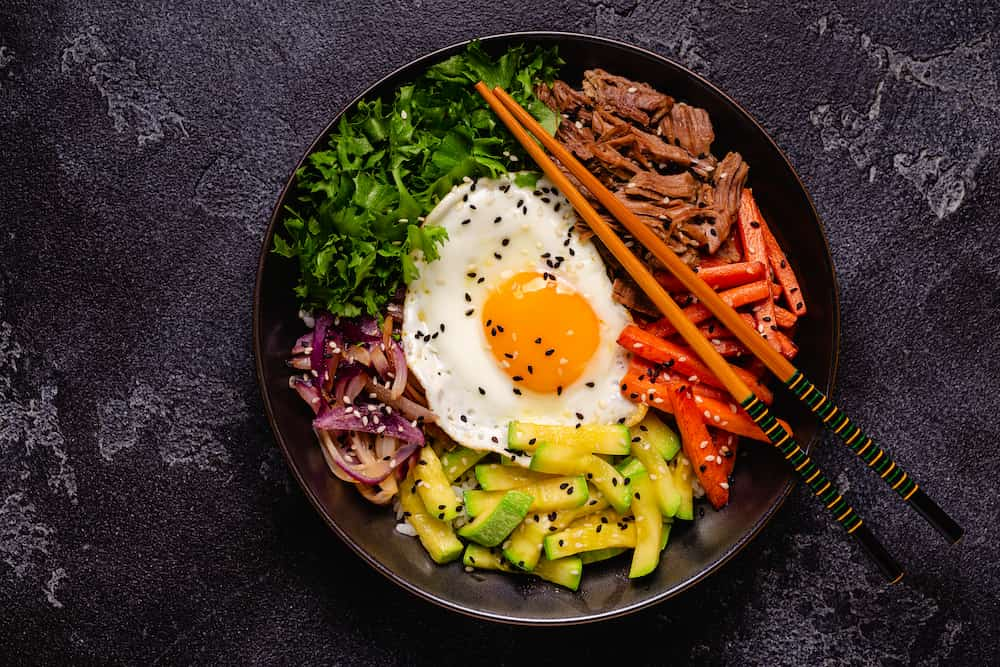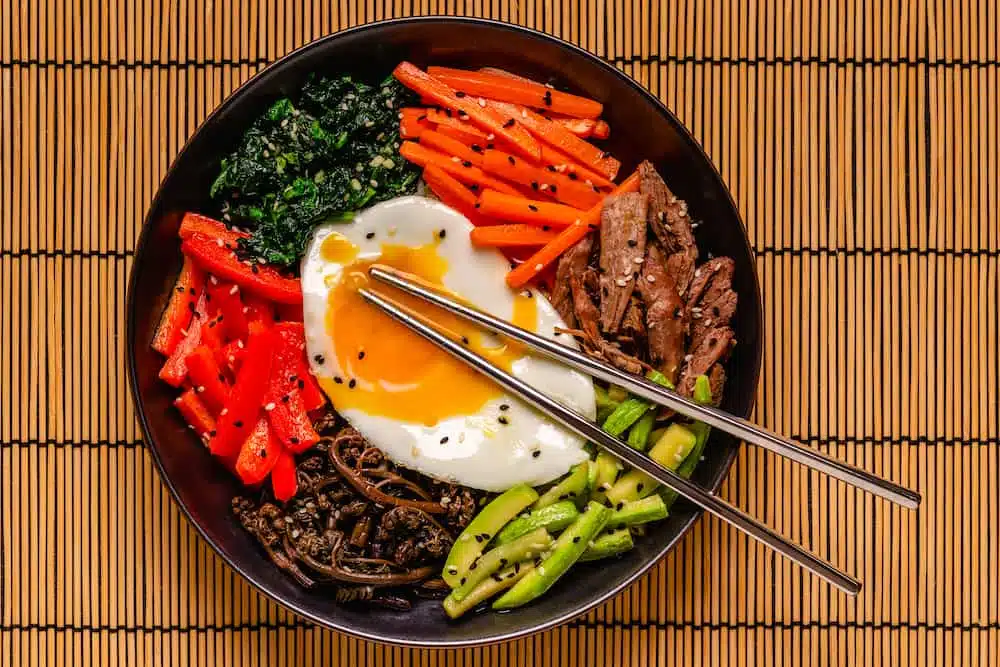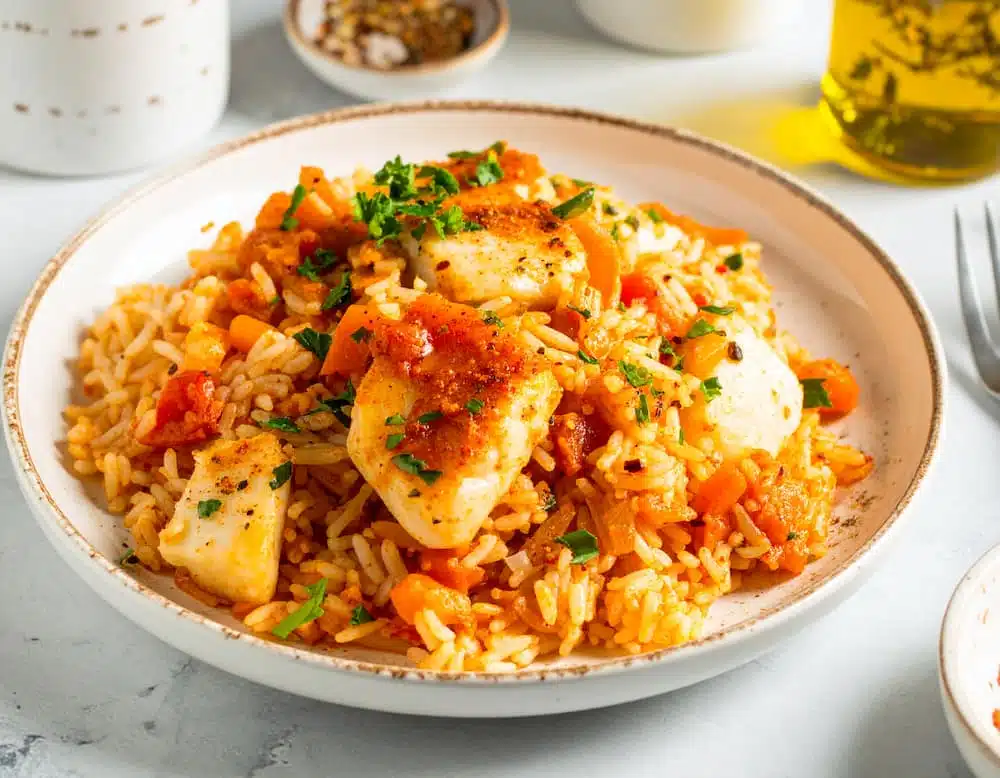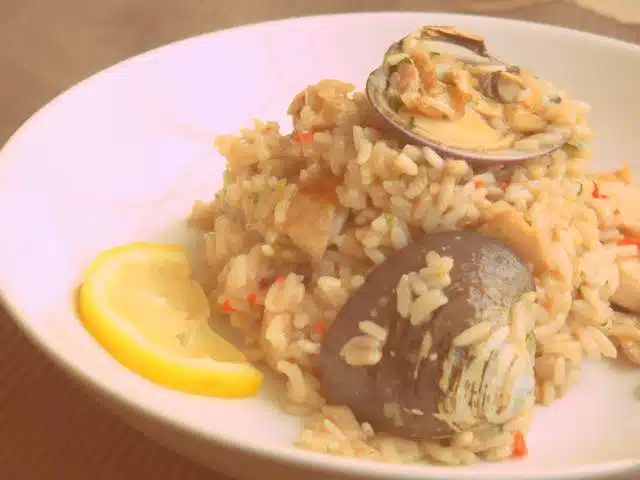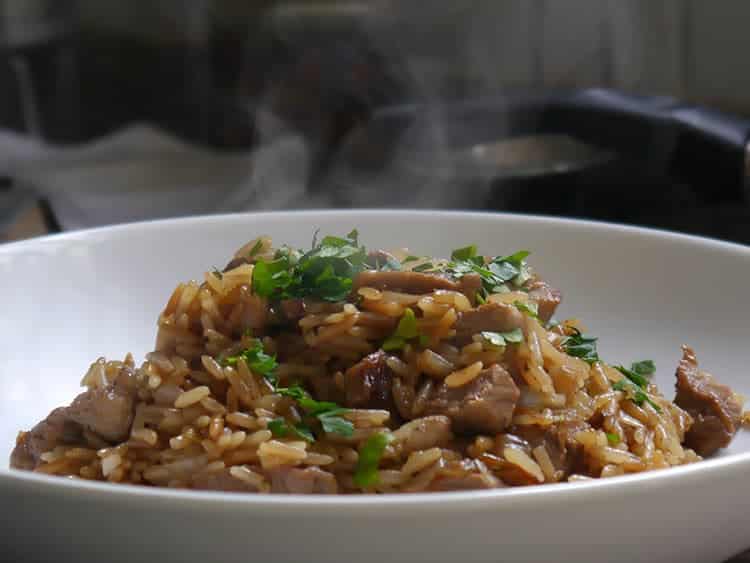Welcome dear friends of Paulina Kitchen! Today we are going to talk about the Bibimbap, a complete, nutritious, colorful and delicious dish of Korean origin, special for rice lovers.
Korean bibimbap is not only a healthy option, but also a visual party for the amount of ingredients it carries . The Bibimbap recipe is very versatile and allows you to play with the ingredients according to the craving or what we have at home.
So prepare for a culinary trip, because here we will learn everything that needs to be known about the Bibimbap , from its secrets, to how to prepare it at home without losing the essence.
About the Bibimbap
To start, what exactly is the bibimbap ? Its name means " mixed rice ", and basically consists of a bowl of rice covered with sauteed vegetables , marinated meat (usually veal), egg and a fermented red chili paste called " Gochujang ."
This dish is an icon of Korean food , and it is basically a palate party, because it combines sweet, salty, spicy and acidic flavors in a single bite. And the most beautiful thing about Korean Bibimbap is that each ingredient has its place in the bowl, as if it were a edible work of art.
7 Bibimbap characteristics
- The white rice base: is the canvas on which all flavors are painted. Bibimbap rice must be glutinous, but not sticky, just to absorb the sauce and maintain its texture.
- Vibrant colors: Each ingredient provides a different color, the green of the zucchini, the orange of the carrots, the white of the soy buds, and the intense red of the enforcement salsa. Eating also enters the eyes, right?
- Versatility: Although there is a "classic" version, Bibimbap is famous for adapting to the available ingredients. From tofu to chicken, or shellfish, here everything is worth.
- Bibimbap sauce: The soul of the dish. The enjoyment is mixed with sesame oil and, sometimes, with a touch of sugar or vinegar to balance the spicy.
- The egg: the crown of the plate is an egg, which can be fried with the yolk in the middle of the cook, so that it is mixed with the heat of the rice and everything is permeated.
- The crispy touch: if prepared in a hot stone bowl (Dolsot), the rice in the background becomes crunchy. A texture that raises the taste of the plate.
- Balanced nutrition: It is a complete dish: carbohydrates, proteins and fiber in a single bowl.
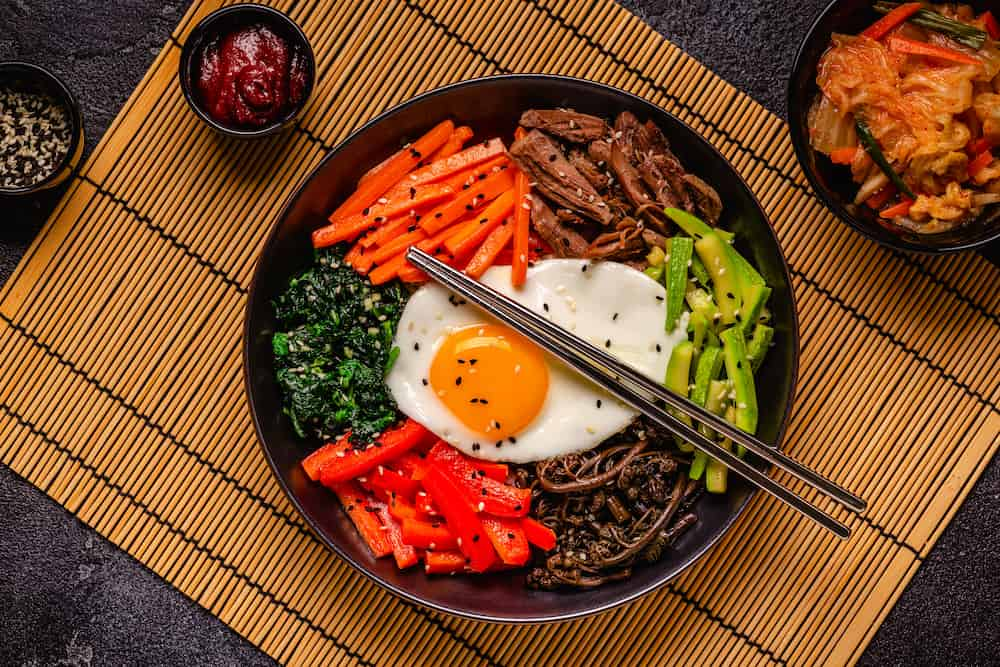
The origin of the Korean Bibimbap: History in a bowl
Bibimbap has its roots in the peasant traditions of Korea . It is said that he was born as a way to take advantage of food remains before the new lunar year. Instead of throwing leftovers, they mixed with rice to create a simple but tasty meal .
Another theory indicates that the dish was related to ancestral rituals, where a combination of food was served to symbolize harmony and balance .
- Even his name reflects his philosophy: "Bibi" means mixing, and "BAP" is rice . Lighter, impossible.
Be that as it is, what is clear is that Bibimbap Korean food has gone from being a homemade dish to become a symbol of the cuisine of that country.
The best rice for bibimbap
To make a Korean bibimbap with all the letters, it is recommended to use white short grain rice , also known as glutinous rice that is used in so many oriental dishes , such as Yakimeshi . This type of rice has the right amount of starch to achieve a soft and slightly sticky , perfect for absorbing bibimbap sauce .
It is best to avoid long grain or basmati rice . Because although they are delicious in other contexts, they do not meet the texture or flavor that this dish requires. And an extra advice: rinse the rice before cooking it to eliminate excess starch and achieve a cleaner and more loose grain.
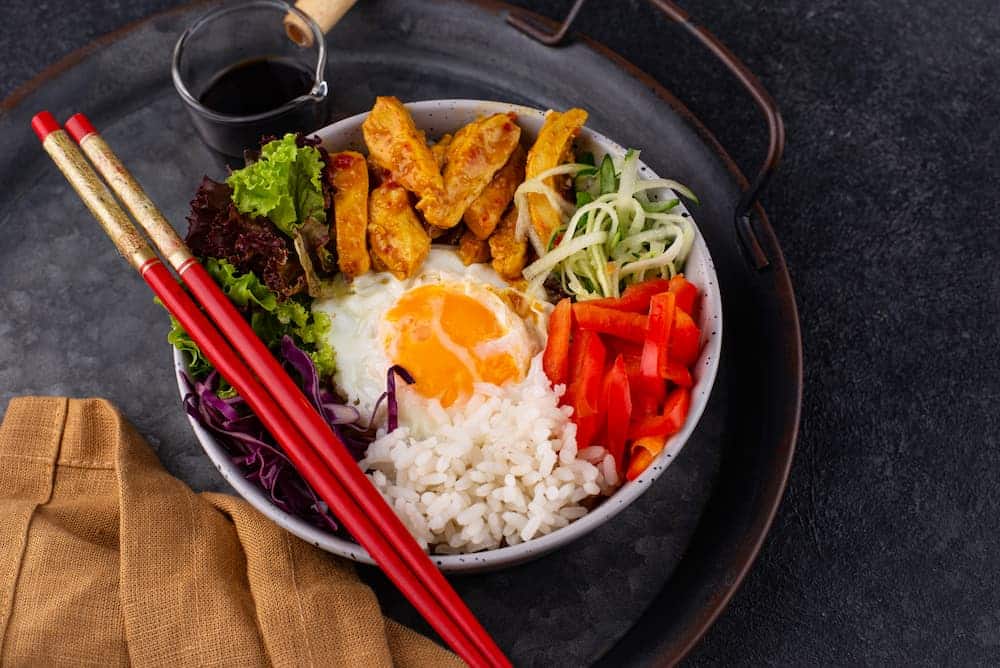
5 ways to prepare bibimbap
- Dolsot Bibimbap: It is prepared in a hot stone bowl, which creates a layer of crunchy rice in the background that is a delight.
- Vegetarian Bibimbap: Perfect for those who prefer to avoid meat. Vegetables and Tofu are the protagonists here.
- Bibimbap with chicken or pork: a variant for those who look for something different from traditional veal meat.
- Seafood bibimbap: shrimp, squid or even smoked fish give this dish interesting.
- Bibimbap with Kimchi: For spicy lovers, this version includes Kimchi as the main ingredient.
7 tips to make the best bibimbap
- Prepare everything before riding the dish: the secret is in the organization. Cook each ingredient separately to maintain individual flavors.
- Do not spare in the sauce : the sauce is the soul of the dish, so it is important to have enough enjoyment.
- Use a good bowl: if you have a dolsot (stone bowl), use it. But, a large ceramic bowl also works.
- Do not overcome vegetables: they must be tender but with some crispy.
- The egg is key: the yolk must be liquid enough to mix with rice and create a creamy texture. They can be fried or climbed , for a lighter option
- Adjust the spicy level: For a less spicy option, the enforcement can be mixed with more sesame or honey oil.
- Playing with the ingredients: the beauty of the Bibimbap is that it admits many ingredients, from asparagus to Shiitake mushrooms.
Follow on Instagram ( here )
and on YouTube that I upload new recipes every week ( click here )
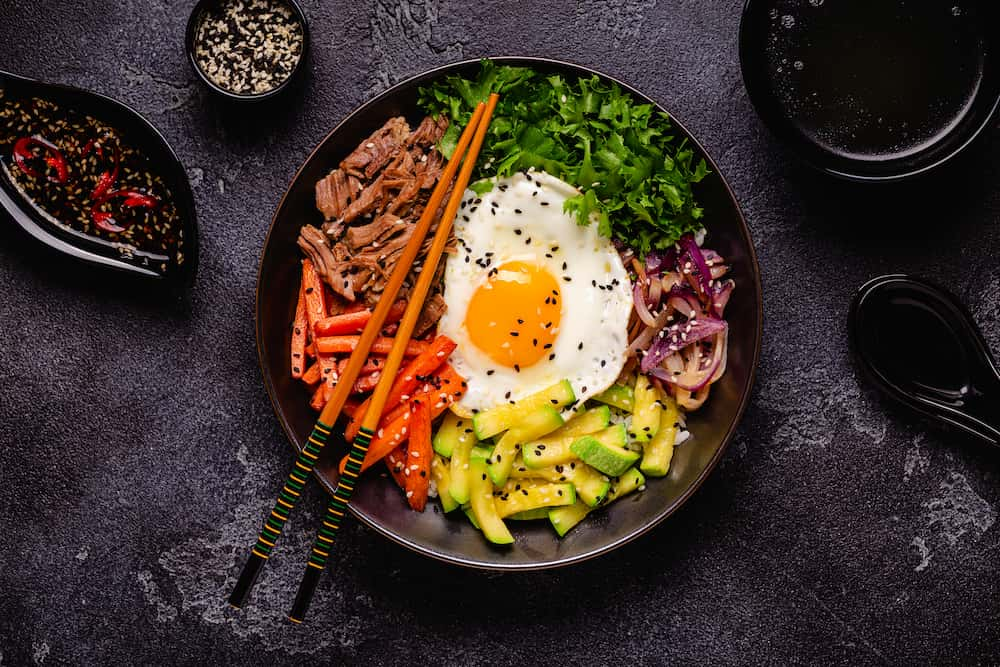
Korean bibimbap recipe
Yields: 4 portions
Preparation time: 40 minutes
Ingredients
- 2 cups of white short grain rice (glutinous rice)
- 200 g of veal meat in strips
- 1 Carrot in Juliana
- 1 zucchini in thin strips
- 1 Red Mryr in Fine Strits (Optional)
- 1 spinach package
- 1 egg per person
- 2 tablespoons of sesame oil
- 2 tablespoons soy sauce
- 2 tablespoons of enforcement (red chili paste)
- 1 chopped garlic clove
- Salt and pepper to taste
- Sesame seeds to decorate
How to do Korean bibimbap step by step
- Rinse the rice several times until the water comes out clear. Cook it with a proportion of 1 cup of rice for 1.2 cups of water until tender. Reserve hot.
- Save each vegetable (carrot, zucchini, belling and spinach) separately in a hot pan with a pinch of salt and a few drops of sesame oil. Cook each for 2-3 minutes, until they are tender but crispy. Reserve.
- Mix veal strips with soy sauce, chopped garlic and a tablespoon of sesame oil. Let stand about 10 minutes and then cook them 5-7 minutes in a hot pan.
- Cook the eggs so that the yolk is liquid (1-5 min). You can also use raw eggs in the traditional style, make sure they are fresh and good quality eggs.
- In a large bowl, place the rice as a base. Above, dispose of vegetables, meat and egg strips. Add a generous tablespoon of enjoyment in the center.
- Just before eating, mix all the ingredients in the bowl. Making sure to integrate the enforcement with rice and the other ingredients. Decorate with sesame seeds (optional) enjoy!
